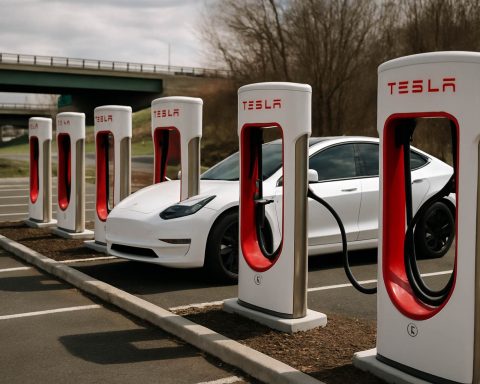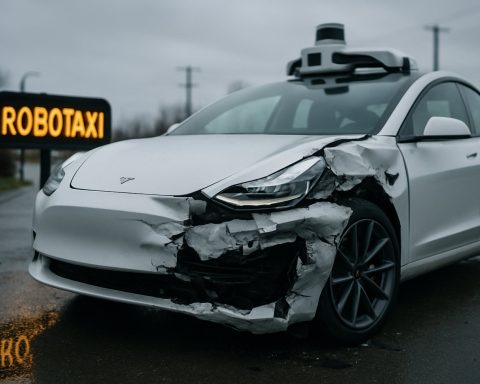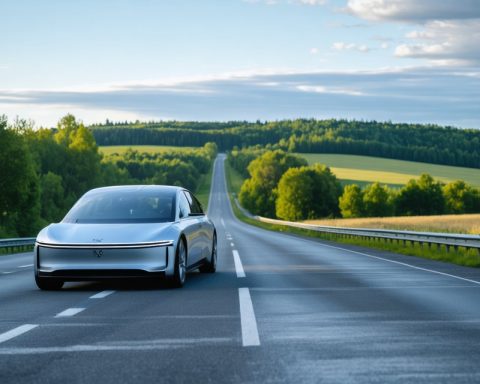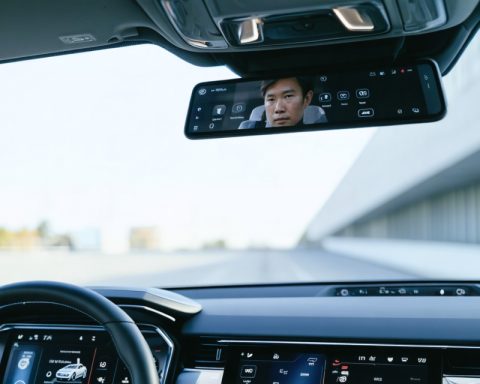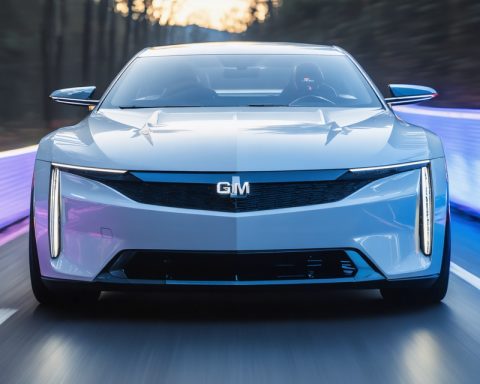- BYD has surpassed Tesla in battery electric vehicle (BEV) sales for two consecutive quarters, marking a shift in global market dynamics.
- BYD sold 416,388 BEVs in Q1 2025 and 595,413 in Q4 2024, outpacing Tesla’s sales of 336,681 and 495,570 units respectively.
- Strategic focus on technological innovation and scaling manufacturing capabilities has propelled BYD’s growth.
- BYD has expanded beyond North America and Europe, tapping into markets in Asia, Latin America, and Africa.
- Tesla remains a strong competitor, leading in full-year 2024 BEV sales at 1,789,226 units, slightly ahead of BYD’s 1,764,992.
- Projections indicate BYD will capture 15.7% of the global market share by 2025.
- The electric vehicle industry is experiencing rapid innovation and competition, signaling an electrified future of mobility.
Power surges in the global electric vehicle arena as BYD solidifies its status as the top seller of battery electric vehicles (BEVs) for two consecutive quarters, shaking the foundations held steadfast by Tesla for over a decade. With its strategic prowess and cutting-edge innovation, BYD has effectively rewritten the script of EV success.
The numbers tell the captivating story: In the triumphant first quarter of 2025, BYD boasted an eye-popping 416,388 BEV sales, outstripping Tesla’s figure of 336,681 units. This follows the momentous Q4 2024 triumph where BYD’s sales soared to 595,413, leaving Tesla trailing behind with 495,570 deliveries. It’s not merely a matter of stats—it’s a signal of seismic shifts in consumer preference and market dynamics.
At the heart of BYD’s ascent lies a bold and unrelenting strategy. Their emphasis on technological innovation, coupled with an aggressive scaling of manufacturing capabilities, allowed the Chinese automaker to outpace Tesla. By harnessing advancements in battery technology and leveraging China’s vast manufacturing ecosystem, BYD delivered a lethal combination of performance and affordability—an irresistible proposition for an environmentally conscious global consumer base.
Unlike its rivals, BYD made significant headway in markets beyond the familiar confines of North America and Europe. Their extensive outreach into Asia, Latin America, and expanding presence in Africa taps into a global surge towards sustainable mobility. The brand’s concerted efforts to tailor vehicles to the diverse needs of these markets showcase a keen understanding of international landscapes.
Tesla, not one to shy away from a fight, continues to pioneer with relentless innovation and brand appeal, underscoring the competitive dance between these automotive giants. As of 2024, Tesla still commanded a slight edge in full-year figures with BEV sales registering at 1,789,226 units compared to BYD’s 1,764,992. However, projections point towards BYD capturing a significant 15.7% share of the global market by 2025.
While these figures paint a compelling picture of BYD’s meteoric rise, the broader tale is one of consumer empowerment and industry adaptation. The standout takeaway is the undeniable momentum gathered by electric vehicles in redefining transport. As consumers worldwide embrace the electric promise, automakers are nudged into an electrifying race where innovation knows no bounds and competition fuels progress.
In this ever-evolving landscape, the question remains not if, but how quickly traditional boundaries will dissolve in the high voltage world of electric mobility. As the rivalry between these titans continues to unfold, one thing is certain: the future of transportation is anything but static, and the road ahead is electric.
Can BYD Sustain Its Lead Over Tesla in the Electric Vehicle Market?
Introduction
In the electric vehicle (EV) arena, BYD has upended Tesla’s decade-long dominance, establishing itself as the premier seller of battery electric vehicles (BEVs) for consecutive quarters. This shake-up is more than just numbers; it’s indicative of a significant shift in consumer preference and market dynamics.
Factors Behind BYD’s Success
1. Technological Innovation:
– BYD’s advancements in battery technology, specifically its proprietary Blade Battery, offer increased safety and longer life spans compared to traditional lithium-ion batteries.
2. Cost-Competitiveness:
– By capitalizing on China’s manufacturing ecosystem, BYD achieves economies of scale that keep costs down, enabling competitive pricing which appeals to cost-sensitive markets.
3. Global Reach:
– Unlike many competitors, BYD effectively taps into new markets in Asia, Latin America, and Africa, responding to local needs and tailoring offerings accordingly.
4. Environmental Appeal:
– The rise in eco-conscious buyers has driven demand for BYD’s affordable but high-performing EVs, which align with global sustainability trends.
Tesla’s Competitive Edge
While BYD races ahead, Tesla maintains its stronghold in the EV sector through:
– Brand Loyalty:
– Tesla has cultivated a powerful brand synonymous with innovation and luxury, appealing to tech-savvy consumers in mature markets.
– Autonomous Driving Technologies:
– Tesla’s continued focus on Full Self-Driving (FSD) capabilities places it at the cutting edge of autonomous vehicle development.
Industry Trends and Predictions
– Market Growth:
– The global electric vehicle market, valued at approximately $240 billion in 2022, is projected to grow at a CAGR of 29.6% from 2023 to 2030 (Source: Grand View Research).
– Emerging Markets:
– Countries like India and Brazil could see increased EV adoption, driven by urbanization and progressive policies.
– Technological Integration:
– Integration with smart home systems and renewable energy sources will become standard, enhancing the attractiveness of EV ownership.
Expert Insights
Experts predict that by 2025, BEVs will account for 25% of all new car sales globally. The emphasis on developing infrastructure, such as charging stations, will be crucial to sustaining growth.
Real-World Use Cases
– Fleet Electrification:
– Companies are increasingly turning to EVs for their fleets, driven by regulatory pressures and cost savings on fuel.
– Public Transport:
– Cities are deploying electric buses, taxis, and service vehicles, reducing urban emissions and promoting healthier environments.
Actionable Recommendations
– Consider Total Cost of Ownership (TCO): When deciding between BYD and Tesla, calculate not just the purchase price but also operational costs over the lifespan of the vehicle.
– Evaluate Local Incentives: Check for government incentives which can significantly lower the cost of ownership of an EV.
– Stay Informed on Charging Infrastructure: Ensure availability of charging stations in your area or invest in home charging solutions.
Conclusion
The competition between BYD and Tesla is reshaping the electric vehicle market. While BYD’s innovation and strategic expansion drive its recent success, Tesla’s brand and advancements in autonomous technology continue to make it a formidable contender. Ultimately, the future of transportation is clearly electrified, and consumers should weigh both options to find a vehicle that best meets their needs.







